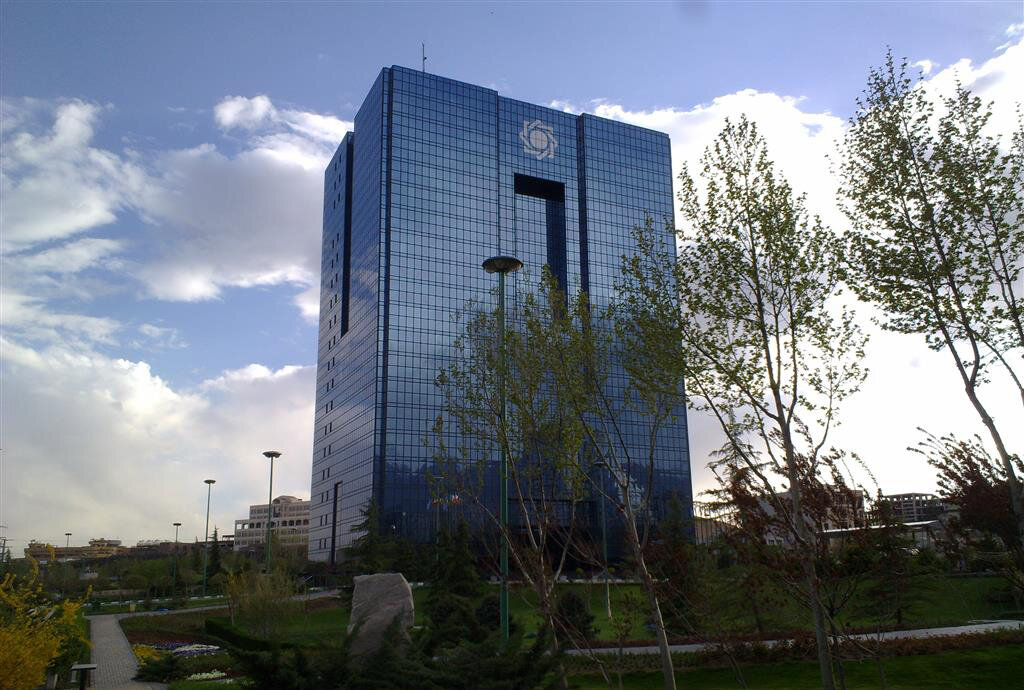Iran’s economy grew by 4% in the last fiscal year that ended on March 20, 2023, the Central Bank of Iran said in a new report.
The growth rate was down by 0.4% compared to the previous year when it stood at 4.4%, according to the bank.
Without taking into account crude oil production, the GDP growth stood at 3.5% in the financial year 2022-23, CBI added.
Q1-4 rates were put at 1.9%, 3.9%, 4.9% and 5.3% respectively.
A sectoral breakdown of GDP shows the main groups of agriculture, oil, industries and mines, and services expanded by 1.1%, 10%, 6.5% and 2.7%.
The CBI report came after the Statistical Center of Iran said the domestic economy grew by 4.8% in the fiscal 2022-23, unchanged compared to the previous year.
SCI said the economy grew by 4.5%, excluding crude oil.
Q1-4 rates were put by the center at 6.4%, 3.2%, 4% and 5.6% respectively.
Iran’s GDP Forecast by World Bank
The World Bank expects Iran’s economy to grow by 2.2% in 2023.
The newly-released June edition of Global Economic Prospects report has put last year’s growth rate at an estimated 2.9%.
“Growth is expected to slow in the Islamic Republic of Iran to 2.2% in FY 2023-24, from 2.9% the previous fiscal year, as oil exports and government consumption growth slows,” the report reads.
It goes on to forecast real GDP growth in 2024 and 2025 at 2.1% and 1.9% respectively.
The data show projection for 2024 has been revised up by 0.1% while it remains the same in 2023 compared to the January edition of the report.
According to the World Bank, Iran’s economy grew by 1.9% and 4.7% in 2020 and 2021 respectively.
The quarterly estimates read 6.7%, 5%, 2.5%, 3.4% and 4.7% in Q4 2021, Q1 2022, Q2 2022, Q3 2022 and Q4 2022.
The January report said: “In the Islamic Republic of Iran, growth in FY 2023-24 has been revised down by 0.5 percentage point, to 2.2%, on account of slower growth in key trading partners and new export competition from discounted Russian oil. Domestic demand is also likely to be curbed by the effects of high inflation on real incomes, which is expected to average 44% in FY 2023-24. Growth is projected to slow further, to 1.9% in FY 2024-25.”
The new report shows improvement in forecast compared to World Bank’s more recent publication, the MENA Economic Update for April, which said, “Because of intensifying economic sanctions, Iran’s growth will likely remain at low levels. As oil prices decline, Iran’s GDP is forecast to grow 2% in 2023. This represents a deceleration from 2.7% growth in 2022, which was constrained by water and electricity shortages as well as political instability.”
Dependence on Oil Revenues Persists
Reducing the reliance of Iran’s economy on oil revenues and increasing the share of non-oil sector in economic growth have been one of the most frequently discussed subjects among experts.
Statistics, however, show that the growth of Iran’s economy in recent years, particularly in the 2010s, was mainly due to the sale of oil. These were stated by Vahid Shaqaqi-Shahri, an economist and university professor, in a write-up for the Persian daily Jahan-e Sanat. The full text follows:
Oil sale has been the most effective factor in boosting economic growth whether in the fiscal 2016-17 when Iran’s economy grew by 12.5% following the conclusion of the Joint Comprehensive Plan of Action and international interactions with the West, or in recent years when we saw negative or close to zero economic growth due to sanctions.
Data show that the value added growth of the oil sector contributed 9.8% of the 12.5% growth in 2016-7. Therefore, we can say with conviction that in the 2010s, Iran’s economic growth was completely dependent on the oil sector, the added value of the oil sector and oil revenues. The higher economic growth registered in 2021-22 compared with last year was thanks to the higher growth of oil revenues. In other words, the government managed to sell more oil last year.
In the 2010s, other economic sectors, including agriculture, industry and even services, did not have a significant impact on economic growth. This is worrying because government officials have not been able to realize the dream of ending the economy’s dependence on oil.
For making predictions for the economy, we need to bear in mind that the agriculture sector will not be able to expand significantly, given the water crisis. As a result, the agriculture sector is bound to have a negative impact on economic growth in the 2020s.
Fundamental development and structural changes indicating a real growth in the industrial and services sectors, or their added value, are unlikely. As a result, Iran’s economy will remain dependent on oil revenues; there will be no special change in the country’s economic structure.
This makes us realize that the positive numbers of economic growth are only the result of the increase in oil prices and the sale of oil and oil products. When we speak of positive economic growth in the country, we are in fact referring to the changes in the industry, agriculture and services sectors.
As structural and institutional reforms are nowhere to be seen in these sectors, we can conclude that any positive growth is contingent on oil sales. Therefore, if the sanctions are lifted and oil sales increase, the economy will register growth.
In closing, if the sanctions persist, Iran’s economic growth will hover between 2-3% next year. But if the sanctions are unraveled, the economy will expand by up to 6% owing to the added value of the oil sector. Structural and institutional changes in knowledge-based, services and industrial sectors are vital for Iran’s economy.
Unfortunately, we don’t see any signs of change and reform in the country and this signals the continuation of the economy’s dependence on oil and its sales.


